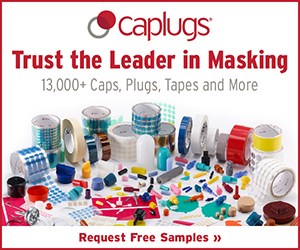Coating for Harsh Marine Environments
Seacoast environments present big challenges for the durability of outdoor coatings. In this helpful Ask the Expert article, powder coating expert Rodger Talbert outlines the challenges and the proper steps you should take to ensure corrosion resistance, mechanical performance and UV resistance for your outdoor coatings.

Rodger Talbert has more than 30 years of experience in the powder coating industry.
Q: We run a batch powder coating system and we do a variety of large and small contract coating work. We have been coating outdoor products such as fencing, rails, door and window frames, and other hardware for a long time without any significant problems from the field. We recently did a fencing project that was installed around a swimming pool in Florida and the coating is peeling from the aluminum fencing. We will have to take the fence down and recoat it, but we want to be sure we do not have the same problem. Can you tell us what we should be aware of to get good results?
A: Outdoor durability relies on following a series of process steps that inhibit moisture penetration and ensure sunlight resistance. A seacoast environment elevates the challenge substantially and a seacoast environment with a swimming pool in the mix demands an exceptional process for long-term performance.
The process starts with the metal preparation. Aluminum needs a good cleaning and etching process to remove the oxide layer and a strong conversion coating using a reliable chrome or non-chrome product in order to passivate the surface for good bonding of the coating. If the surface is treated correctly, the powder will adhere and the performance can be very good. The surface will also need a high-quality primer to protect against corrosion and provide a good bond for the topcoat. A single coat of powder may not be durable enough for the saltwater-laden air. In addition, the topcoat material needs to be a good quality product for protection against sun, mist and rain. The overall thickness of the coating must be adequate to resist penetration to the substrate. The coating has to be applied correctly and cured correctly. One or more of these things was likely missing from your process. It is possible the surface was not treated correctly. The coating may be one coat or it may be too thin. The coating that was selected may not be right for the environment or it may not have been cured correctly.
You will need to remove the old coating (probably by blasting) and ensure the surface is completely clean. You will need to apply a good aluminum chrome or non-chrome conversion coating, a primer coat and a high-quality topcoat. Make sure that your customer agrees to some level of performance that is reasonable over time and make sure you can meet that standard.
The American Architectural Manufacturers Association (AAMA) publishes specific guidelines for achieving performance at different levels in outdoor applications. The specifications are written for three different levels of performance, ranging from good (AAMA 2603) to better (AAMA 2604) to the best (AAMA 2605). The particular pretreatment and/or coating is flexible as long as the performance meets the designated level for corrosion resistance, mechanical performance and ultraviolet resistance. Your project should have been coated to meet the best possible standard for that touch location in Florida. Get a copy of AAMA 2605 and determine if you can meet it before you take on this kind of work in the future.
Related Content
Top Reasons to Switch to a Better Cleaning Fluid
Venesia Hurtubise from MicroCare says switching to the new modern cleaning fluids will have a positive impact on your cleaning process.
Read MoreHow to Choose Between Sulfate and Chloride-Based Trivalent Chromium
There are several factors to consider when choosing between sulfate and chloride-based baths for trivalent chromium plating. Mark Schario of Columbia Chemical discusses the differences and what platers should keep in mind when evaluating options.
Read More3 Tests to Ensure Parts are Clean Prior to Plating
Making sure that all of the pre-processing fluids are removed prior to plating is not as simple as it seems. Rich Held of Haviland Products outlines three tests that can help verify that your parts are clean.
Read MoreFilter Press Troubleshooting and Optimization
Zachary Beckman of Haviland Enterprises Inc. discusses proper filter press maintenance for optimization of wastewater treatment systems.
Read MoreRead Next
The 2024 Ford Mustang: All the Colors Available
Although Chevrolet has announced the end of the Camaro and Dodge is offering “Last Call” editions of the Charger and Challenger, the Ford Mustang is launching to its seventh generation.
Read MoreEpisode 42: An Interview with Robin Deal, Hubbard-Hall
Hubbard-Hall wastewater treatment specialist Robin Deal discusses the latest trends in wastewater management.
Read MorePowder Coating 4.0: Smarter, Faster, More Efficient and Connected
New tools reduce cost and waste, lower manufacturing footprint of powder coating operations.
Read More


























